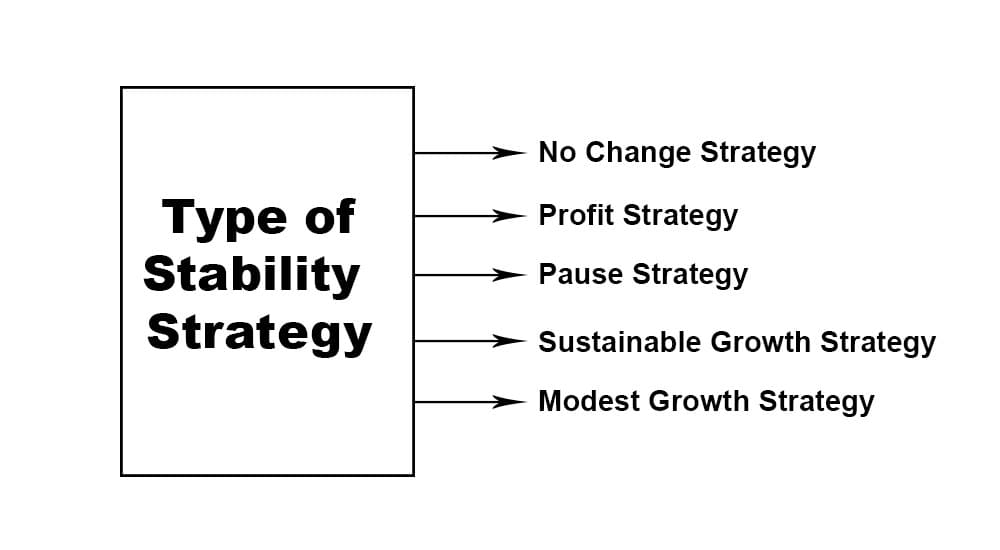Definition: Stability strategy is a corporate-level business strategy adopted by organizations to keep businesses going as they are without making any significant changes to the processes. This strategy helps them stabilize their earnings, especially when the market is turbulent or stagnant.
A stability strategy is useful in maintaining growth and earnings in the current market condition.
Reasons for Using Stability Strategy
An organization can adopt a stability strategy because of the following reasons:
- They are satisfied with the current market share.
- The market is stagnant or turbulent.
- The market is saturated.
- The product is matured or nearing its end.
- They are not in a good financial condition to innovate new products.
Types of Stability Strategy

- No Change Strategy
- Profit Strategy
- Pause Strategy
- Sustainable Growth Strategy
- Modest Growth Strategy
No Change Strategy
Here, businesses decide not to make any changes in the process or planning; they want to move as is. Organizations use this strategy when they are happy with the current growth and don’t want any experiments that could hurt their growth.
Profit Strategy
Organizations follow this strategy to maintain profit by any means. They may cut investment, use simpler processes, standard parts, increase the price, etc.
Businesses use a profit strategy when facing some temporary issue or the market has short-term turbulence. Profit strategy is not a long-term strategy. It is a temporary solution.
Pause Strategy
When a business has tremendous growth, they can go for a pause strategy. This strategy allows them to settle and have enough time to re-structure their growth plans. After a sudden high growth, maintaining the business is not easy, and a pause strategy is needed for efficient business functioning.
This is a short-term strategy, and organizations seldom use them.
Sustainable Growth Strategy
This is the realistically attainable growth that an organization can maintain without any issues. An organization uses this strategy when market conditions are unfavorable, unpredictable, and the business has to survive.
Modest Growth Strategy
Businesses use this strategy when they want the same growth they had in the previous year.
Advantages of Stability Strategy
- No risk, or the lowest risk
- Job security for employees
- Consistent profit
Disadvantages of Stability Strategy
- No business growth
- Not applicable for long term
- Can kill innovation
- May lose market share to new products
Summary
Organizations use a stability strategy to keep businesses growing in turbulent or stagnant market conditions. This strategy is temporary and useful for the short term. Using it for the long term is dangerous for organization growth and kills its creativity.
